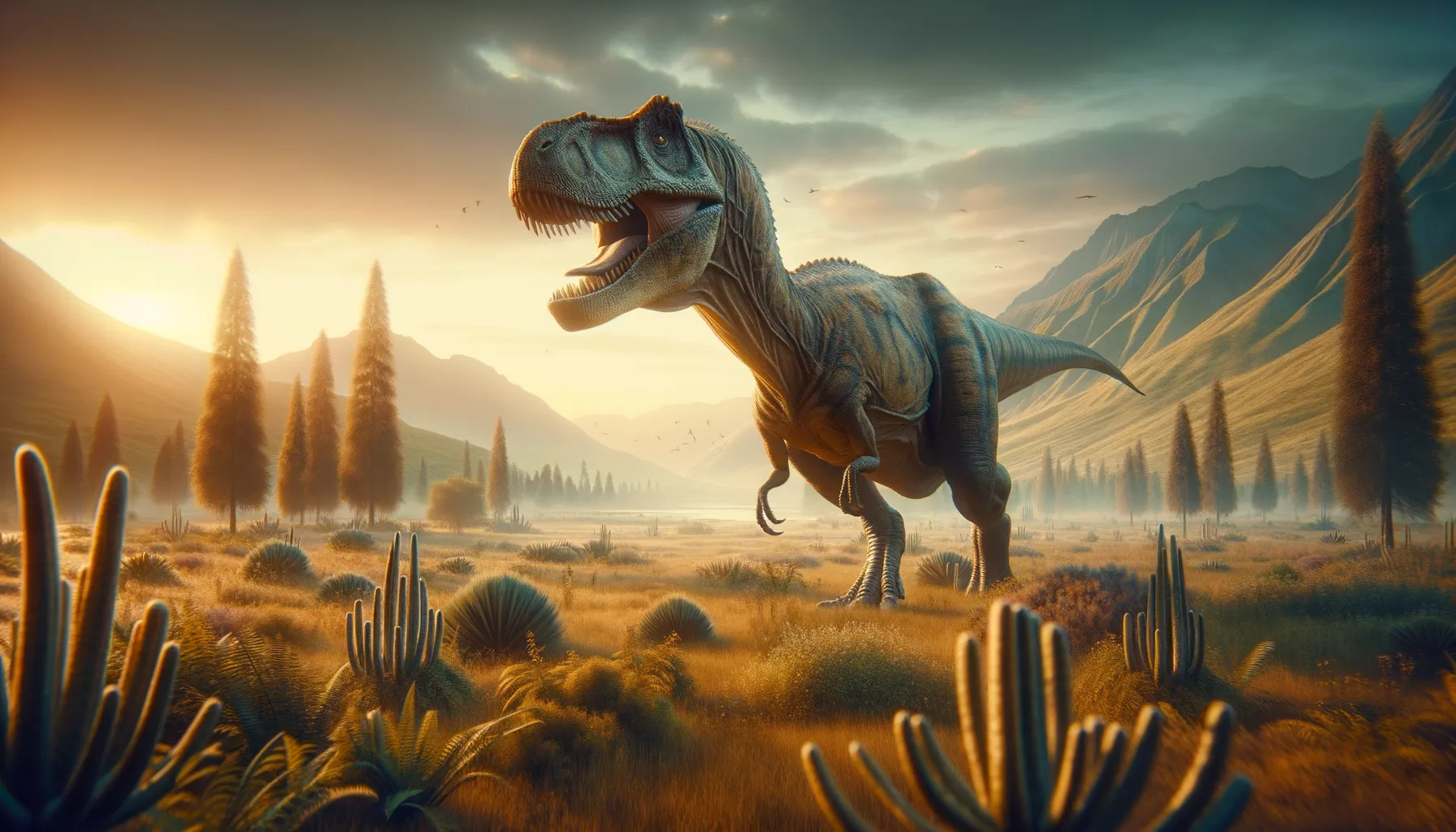
Fukuisaurus
The Herbivore of Ancient Japan
Period
Cretaceous
Length
Roughly 4.5 meters long.
Height
About 2 meters tall.
Weight
Approximately 300 to 500 kg.
Fukuisaurus was a herbivorous dinosaur that roamed what is now Japan during the Early Cretaceous period. It belonged to the Hadrosauridae family and was characterized by its medium size and strong limbs. Its discovery has provided valuable insights into the diversity of dinosaur life in Asia. An adept herbivore, it played a crucial role in its ecosystem's plant management. Its well-preserved fossils have allowed scientists to deduce much about its lifestyle and adaptations.
Diet
Fukuisaurus was a plant-eater, mainly feeding on low-growing vegetation. Its flat teeth were well-suited for grinding leaves and stems, and it likely consumed a variety of soft plants to sustain its energy needs.
Hunting
As a herbivore, Fukuisaurus did not hunt in the traditional sense. Instead, it foraged for food within its environment, using its keen sense of smell to locate and identify edible plants.
Environmental challenges
Environmental challenges for Fukuisaurus included avoiding predators that shared its habitat. Climatic fluctuations might have impacted its food supply, forcing it to migrate for sustenance. Natural disasters, such as volcanic eruptions or floods, could have also posed occasional threats to its survival.
Speed
Likely moderate, not built for high speed.
Lifespan
Estimated to be around 20-30 years.
First discovery
Found in Fukui Prefecture, Japan, in 1989.
Fun Facts
- Fukuisaurus is named after Fukui Prefecture in Japan, where its fossils were discovered.
- It lived during the Early Cretaceous period, approximately 120 million years ago.
- Fukuisaurus was a herbivore, meaning it primarily ate plants.
- This dinosaur had a beak-like mouth, similar to modern birds, used to clip vegetation.
- Fukuisaurus was relatively small for a dinosaur, reaching lengths of around 4.5 meters (15 feet).
- Its fossils were first uncovered in the 1980s, but it was only officially named in 2003.
- Fukuisaurus belonged to the same group of dinosaurs as the well-known Iguanodon.
Growth and Development
Fukuisaurus grew steadily over the course of its life, reaching maturity within a few years. Juveniles were vulnerable to predation but gained strength and speed as they grew. Growth rates were likely influenced by diet availability and environmental conditions.
Habitat
Fukuisaurus inhabited lush floodplains with abundant plant life, providing ample food resources. This environment would have included rivers and forests, offering both sustenance and shelter. The region was also home to a variety of other dinosaurs and wildlife, contributing to a rich and diverse ecosystem.
Interaction with other species
Fukuisaurus likely coexisted with several other herbivores and predators, relying on group behaviors to deter predators. It may have formed mixed-species herds, gaining protection in numbers. Symbiotic relationships with other species might have helped it manage threats and resources effectively.
Natural lifespan
In a stable environment, Fukuisaurus could live for two to three decades.
Reproduction
Fukuisaurus likely reproduced by laying eggs in nests constructed on the ground. Parental care might have involved protecting the eggs until they hatched. Hatchlings were precocial, able to move and forage soon after birth but still needing protection from parents.
Social behaviour
Fukuisaurus exhibited social behavior typical of herbivores, probably moving in groups for protection. Herding instincts provided security against predators, and social interactions helped in finding food resources. Communication among individuals was likely through vocalizations and displays.
Fossil locations
Fossils of Fukuisaurus have been primarily discovered in the Fukui Prefecture of Japan. These findings have helped enrich the understanding of Early Cretaceous ecosystems in this region. The locality has become significant for dinosaur research, with numerous other species’ fossils also unearthed nearby.
